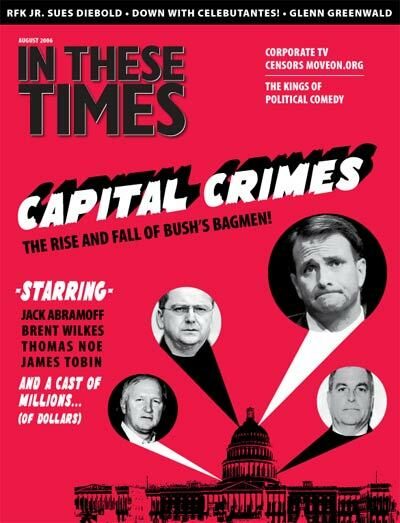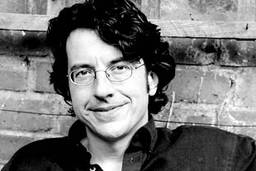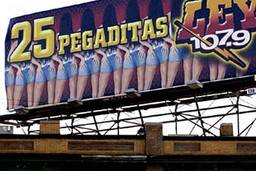Hasterts Earmarks: Pork or Politics?
former Speaker Hastert in land deal scandal that questions legitimacy of federal funding.
Phoebe Connelly

In June, Speaker of the House Dennis J. Hastert (R-Ill.) made headlines twice. At the start of the month, he became the longest-serving Republican Speaker in history. But at month’s end, he was answering questions about a land deal that netted him $1.8 million. The land he’d sold was located five miles from a highway for which he’d earmarked $207 million.
That funding was a small part of a $286 billion transportation measure that contained more earmarks than any federal transportation bill to date. When the bill was in final committee, Hastert placed in two earmarks to fund the Prairie Parkway – a north-south connector west of Chicago that runs through fast-growing Kendall County, which is in Hastert’s district. President Bush signed the bill into law last August, and in December a land trust in which Hastert is a partner sold the property to a local developer.
When the Sunlight Foundation, a congressional watchdog group, broke the news about Hastert’s profits from the land deal, it quickly became a national story about congressional corruption. But at the local level, Hastert’s actions raise questions about how such projects are proposed, funded and completed – who controls the process, and who benefits. The Prairie Parkway earmarks are emblematic of just how undemocratic federal funding has become.
Hastert’s earmarks funded two separate parts of the Parkway – $152 million for the Parkway itself and $55 million for one of the planned interchanges that will go in near Plano (and the property he sold). Hastert said the deal “has nothing to do with the Prairie Parkway. I owned land, and I sold it, like millions of people do everyday.”
Jon Purcell, chair of the Kendall County Board Highway Committee, also rejects the idea that Hastert did anything wrong. “That’s bullshit,” he says. “He got funding for a needed project. There’s no story there.” Purcell notes that Kendall County is the third fastest-growing county in the nation, and that many local residents and businesses have made similar profits over the past five years. Indeed, much of the debate over the Parkway centers around the growing suburbanization of this former farming community.
Jan Strasma, one of the leaders of Citizens Against the Sprawlway, a community group opposing the Parkway, is concerned that almost all federal funds now come via earmarks. “The trouble with earmarks is that it makes congressmen into the planners and decision makers on projects, as opposed to people at the county and the state level,” Strasma says.
For Strasma, the Parkway has been driven by federal funds all along. Initial planning for the Parkway began in 1999, and a proposed corridor was selected in 2002. That same year, Hastert earmarked $14.5 million for the environmental impact study. It appears likely that the new funds will insure the highway begins construction once the final impact study and route selection is complete.
For those who support the Parkway, this is exactly the benefit of using earmarks: Hastert’s interventions have given the project regular bursts of federal funding to keep it on track.
“I think it would have been more devastating to not have earmarked money,” says Whitney French, executive director of the Plano Economic Development Corporation. “To invest 10 years in all this research, in all this legwork, analyze this corridor and then not go forward?”
Earmarks have become the fastest way to get money directly to local infrastructure projects. In mid-July, a New York Times investigation found that since 1998 the number of localities employing lobbyists to secure federal earmarks has nearly doubled – from 763 to 1,421. “If this is the method to get funding, if the way to get a hot dog is to go to the store and buy one, why would you go out and slaughter a pig?” French says. “It’s just the way everyone does it. If you don’t do it that way, you might not get the hot dog.”
When politicians and citizens who benefit from them talk about earmarks, there seems to be a reverse NIMBYism at work. Earmarks are troubling when they’re in someone else’s district, but when your town receives them, it means your representative has brought home the bacon. Bill Allison, senior fellow at the Sunlight Foundation who broke the story, says that earmarks sometimes please constituents, but they’re just as often sops to political supporters. They are designed so that other lawmakers, much less voters, do not have a chance to debate their merits.
“These lawmakers are buying votes with taxpayers’ own money,” Allison says. “It bypasses a democratic system with checks and balances, that has local governments, along with state and federal governments making decisions.”

I hope you found this article important. Before you leave, I want to ask you to consider supporting our work with a donation. In These Times needs readers like you to help sustain our mission. We don’t depend on—or want—corporate advertising or deep-pocketed billionaires to fund our journalism. We’re supported by you, the reader, so we can focus on covering the issues that matter most to the progressive movement without fear or compromise.
Our work isn’t hidden behind a paywall because of people like you who support our journalism. We want to keep it that way. If you value the work we do and the movements we cover, please consider donating to In These Times.






